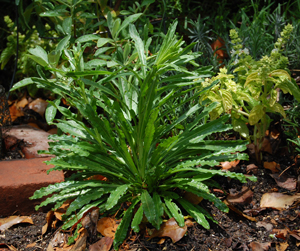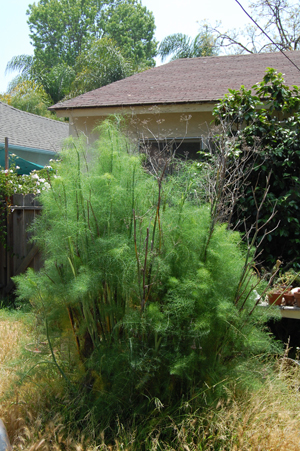
Although Eucalyptus is not native to Los Angeles there is quite a bit of it around town. In fact in some areas you will be brushing it off your car every day.
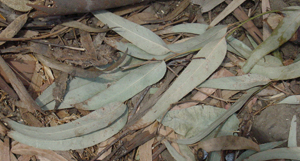
Using it as a dyestuff some people have been wildly unimpressed with my results but I like the color all the same, sometimes blended with with Fennel and lawn grass dyed wool.
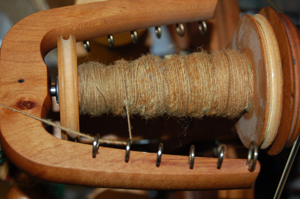
I guess I should say that it’s possible to get nearly the same orange-rust color range with onion skins and less fuss. But if you should find youself with lots of Eucalyputs leaves, undyed wool and are wondering what to do with it…
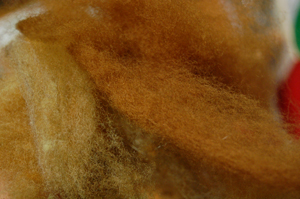
wool: yes, I got light orange to dark rusty orange. Some people get red from Eucalyptus but I have not. I don’t know if it makes a difference where the plant is grown or not.
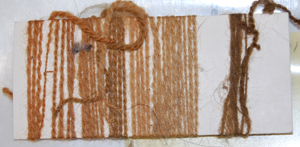
cotton and other fibers: don’t know I have only tried this with wool so far, but having seen Soy Silk sponge up any color I I’ve dropped it into I’m guessing somehting would work.
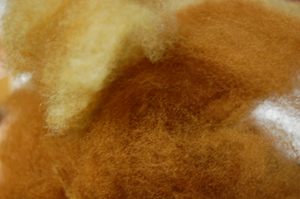
Links with information about using Eucalyptus as a dye:
What I tried was based on reading Ida Grae’s Nature’s Colors and the two articles I have links for above. Amounts of plant to fiber were anywhere from 4:1 to 16:1 for the darkest.
I used a mix of Silver Dollar (the small, round leaves) and the long thiner leaves. Some recipies suggest using Silver Dollar only. Leaves chopped smallish and soaked for 3–days. Brought slowly to boil and simmerd for 1 hour. (I read if you run up the heat to fast, it turns brown but I have not tested this out).
Pulled out the dye material (before any mordant, so I don’t have to dispose of contaminated dye garbage), added alum, cream-of-tartar, the alumed wool and simmered another hour. Let cool for about 24 hours – the next day after work. After this you can try any other mordants (iron, copper or tin) or afterbaths (Ammonia or Vinegar).
